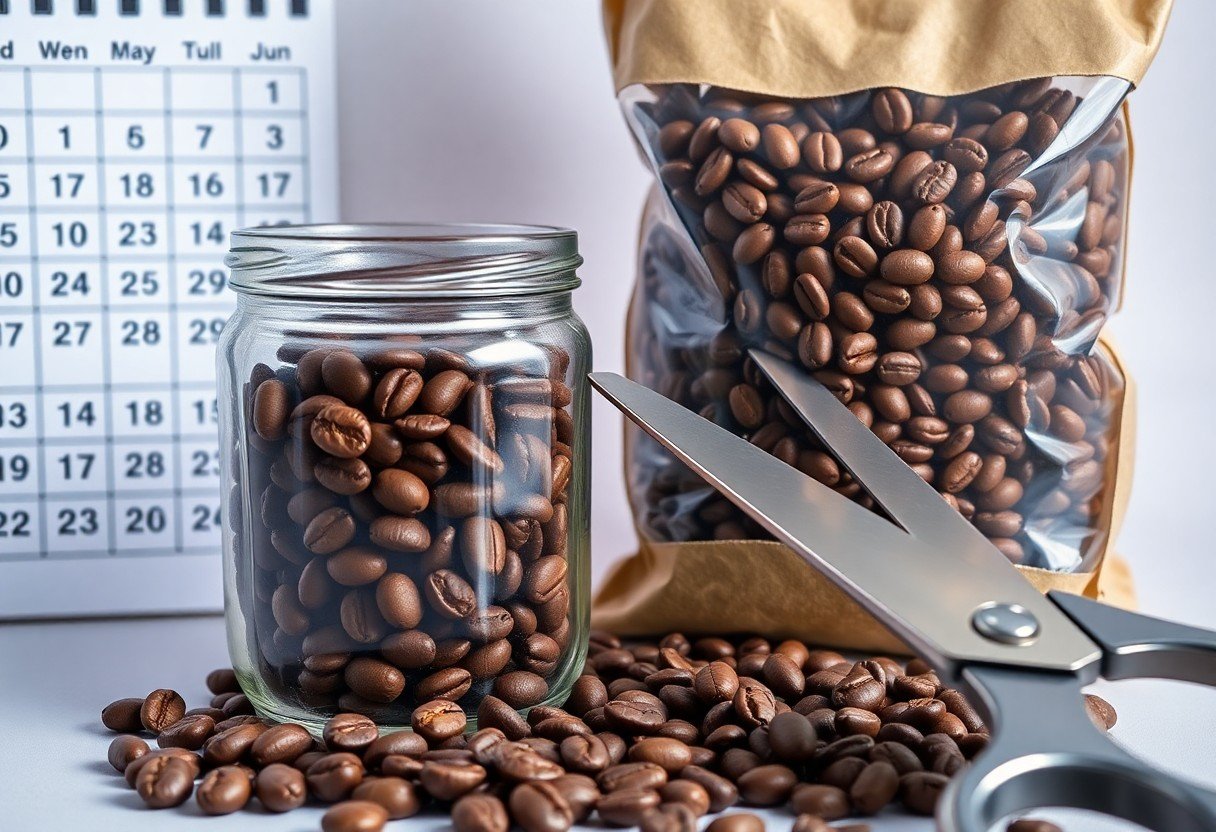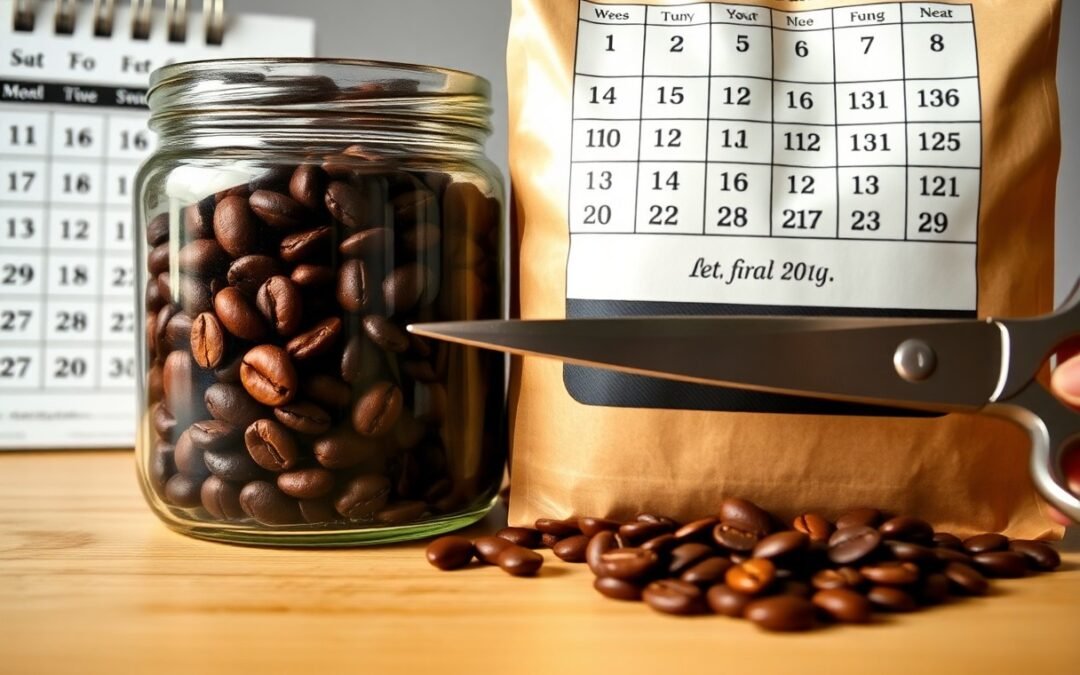It’s important to know how long your coffee beans can stay fresh to ensure you enjoy the best flavor in every cup. Whether you’re a casual drinker or a coffee enthusiast, understanding the shelf life of your beans and how to extend their freshness can enhance your daily brew. This guide will provide you with expert tips on storage, best practices, and how to tell when your coffee has lost its peak flavor, helping you make the most of your coffee experience.
The Life Cycle of Coffee Beans: From Harvest to Brew
The journey of coffee beans begins with their harvest, where ripe cherries are picked from coffee plants. After harvesting, the beans undergo processing, which includes washing and drying to enhance flavor. Next, they are hulled and graded before heading to the roaster. Roasting transforms the green beans into the aromatic, brown beans you know and love, ready to brew. Finally, the brewing process extracts flavors from the roasted beans, resulting in a cup of coffee that carries the story from farm to mug.
Factors Influencing Freshness
Several key factors determine the freshness of your coffee beans, affecting their flavor and longevity. These include:
- Bean type: Arabica tends to have a shorter shelf life than Robusta.
- Storage conditions: Temperature, humidity, and exposure to light can accelerate staleness.
- Roast date: Fresher beans, ideally used within 2-4 weeks post-roast, provide the best flavors.
- Packaging: Airtight containers help maintain freshness longer.
Perceiving these factors can significantly enhance your coffee experience.
Understanding the Roasting Process
The roasting process is a pivotal step that transforms the chemical and physical properties of coffee beans. As beans are heated, they undergo a series of reactions known as the Maillard reaction, contributing to flavor development and the emergence of aromatic compounds. This process results in the creation of unique tasting notes, colors, and aromas that are specific to the roast profile. The degree of roasting, from light to dark, alters the oils and compounds within the beans, impacting both flavor intensity and freshness. A light roast retains more of the bean’s original flavors, while darker roasts may showcase bolder and more robust profiles. Understanding this process allows you to choose the right roast that best suits your palate, and its freshness is key to the ultimate brewing experience.
How Long Should You Expect Your Coffee Beans to Last?
Typically, coffee beans maintain their best flavor for two to four weeks after roasting, depending on their type and storage conditions. While some beans may remain drinkable for several months, the taste generally deteriorates with time. Certain factors, including exposure to light, heat, moisture, and air, can significantly influence their longevity. Prioritizing freshness will ensure you get the best coffee experience possible.
Shelf Life of Unopened vs. Opened Packages
Unopened coffee bean packages can last for up to six months to a year, depending on their storage conditions and packaging. Once you open a bag, exposure to oxygen begins to accelerate the staling process, so you should ideally consume the beans within two weeks for optimum flavor, especially if they are not stored properly.
The Role of Roast Date in Freshness
The roast date is a significant factor affecting the freshness of your coffee beans. Generally, beans are best enjoyed within two to four weeks following the roast date, as they reach their peak flavor and aroma around this time. Many coffee enthusiasts prioritize purchasing beans with a clear roast date to ensure they’re consuming the freshest product possible. Over time, compounds like carbon dioxide dissipate, and the complex flavors that characterize quality coffee begin to fade. Thus, choosing freshly roasted beans will enhance your brewing experience, providing you with rich, tasty coffee.
Essential Storage Techniques to Preserve Flavor
Proper storage can significantly extend the life of your coffee beans while preserving their vibrant flavor. Keeping them in a controlled environment will prevent exposure to factors that usually lead to flavor degradation. Utilize a few techniques, and your coffee will stay fresher for longer, ensuring each cup you brew is as delightful as the last.
Optimal Containers: What to Use and Avoid
Choosing the right container is vital for maintaining your coffee’s freshness. Airtight glass jars, ceramic containers, or vacuum-sealed bags are excellent options, providing a barrier against air and moisture. Avoid transparent plastic containers, which allow light exposure that can degrade flavor, as well as anything made of metal that may impart unwanted tastes over time.
The Impact of Light, Air, and Humidity
Light, air, and humidity have a significant impact on the freshness of your coffee beans. Exposure to light can cause oxidation, which dulls flavors, while oxygen can lead to stale coffee. High humidity introduces moisture, resulting in mold or clumping. Keeping your beans in a cool, dark place, like a pantry, and in an airtight container will combat these elements effectively.
For optimal protection, store your coffee beans away from direct sunlight and in a humidity-controlled environment. Ideally, aim for a temperature below 75°F (24°C) and keep the area dry to avoid moisture buildup. Using oxygen-absorbing packets in your container can also help mitigate air exposure, ensuring that each time you brew, your coffee retains its peak flavor and aroma.

Signs Your Coffee Beans Have Gone Stale
Recognizing stale coffee beans is vital for preserving that fresh brew experience. The most obvious indicators include a lack of aroma, flat flavors, and changes in texture. If your once vibrant coffee beans have lost their robust scent and taste, or you notice an absence of the usual nuances, they may have surpassed their prime. Pay attention to both your sensory experiences and visual clues when assessing your coffee’s freshness.
Aroma and Flavor Profiles to Watch For
A distinct, rich aroma is a hallmark of freshly roasted coffee beans. If you notice your beans scent more like cardboard or have no scent at all, they’ve likely gone stale. Similarly, if your brewed coffee tastes sour, flat, or bitter without the expected complex flavors, it’s time to say goodbye to those beans. Fresh coffee should offer excited notes, be it fruity, nutty, or chocolatey; any diminishment in those qualities suggests they are past their prime.
Visual Indicators of Deterioration
Fresh coffee beans should showcase a glossy sheen due to their natural oils. Dull, dry beans lack life and indicate age. Additionally, watch for any signs of mold or discoloration, as this is a telltale sign that the beans are no longer suitable for consumption. If you see any oily residue on the surface, that could also be a sign they belong in the compost bin.
Beyond sheen, consider the overall appearance and texture of your beans. Fresh beans typically retain a firm and resilient structure, while staleness tends to soften the beans, making them brittle or difficult to grind. If coffee beans appear deeply cracked or have a dull patina, the oils have likely evaporated, contributing to a flavor profile that will disappoint. Keeping an eye on these visual signs, alongside aroma and taste, will give you a clear indication of your coffee beans’ freshness.
Expert Tips for Maximizing Your Coffee’s Shelf Life
To keep your coffee beans flavorful for as long as possible, implement strategies that tackle moisture, light, and air exposure. Utilizing air-tight containers, avoiding temperature extremes, and storing in cool, dark places are steps you can take to enhance freshness. Keep your roasts in small batches, buying only what you can consume within a few weeks. Perceiving these nuances in storage can significantly elevate your coffee experience.
Freezing Techniques: Pros and Cons
Utilizing the freezer for coffee beans can seem a great idea, but it comes with its own set of advantages and disadvantages.
Pros and Cons
| Pros | Cons |
|---|---|
| Can extend shelf life for months | Risk of freezer burn if not sealed properly |
| Maintains flavor if stored correctly | Condensation can occur during thawing |
| Convenient for bulk purchases | Affects aroma and flavors slightly |
| Ideal for infrequent coffee drinkers | Requires extra time for thawing |
Purchasing Strategies for Maximum Freshness
Opting for whole bean coffee and purchasing smaller quantities not only ensures freshness but also enriches your brewing experience. Buy from local roasters who offer a roast date, so you know exactly when your coffee beans were roasted. Look out for sales or subscriptions that allow you to enjoy freshly roasted coffee without accumulating excessive stock. Beans packed in vacuum-sealed bags are also a great find, extending their lifespan while preserving flavor and aroma. By being strategic in your purchasing habits, you can indulge in the delightful world of coffee that stays fresh longer.
Summing up
Following this guide, you can ensure your coffee beans stay fresh for as long as possible. By storing them in an airtight container away from light, heat, and moisture, you enhance their longevity and preserve their flavor. Regularly monitor your beans and choose the right brewing method to maximize your coffee experience. Incorporating these expert tips into your coffee routine means you can enjoy a consistently rich and aromatic cup, whether you buy in bulk or your favorite artisanal blend.
FAQ
Q: How long do coffee beans typically last before they go stale?
A: Coffee beans can last for several months if stored properly. Generally, whole coffee beans can remain fresh for about 3 to 6 months after their roast date. If you opt for pre-ground coffee, it tends to lose its flavor much faster, usually within 1 to 2 weeks. The freshness can also depend on the type of coffee bean and how it’s processed, so it’s always best to check the roast date and smell the beans to assess their quality.
Q: What are the best methods for storing coffee beans to extend their freshness?
A: To keep coffee beans fresh for as long as possible, store them in an airtight container in a cool, dark place, away from heat and moisture. A vacuum-sealed bag or a container with a one-way valve can greatly help. Avoid keeping them in the fridge or freezer, as fluctuating temperatures can introduce moisture and degrade the flavor. Opting for smaller quantities can also mitigate the risks of prolonged storage and keep the beans fresher.
Q: Can I revive stale coffee beans, and if so, how?
A: While stale coffee beans cannot be fully revived, there are ways to make them more palatable. Grinding the beans can release some of the remaining oils and flavors, making your coffee taste slightly fresher. Additionally, you can blend stale beans with fresh ones to balance out the flavor, but the overall quality won’t equal that of freshly roasted beans. For the best experience, it’s advisable to consume coffee beans within their optimal freshness window.

